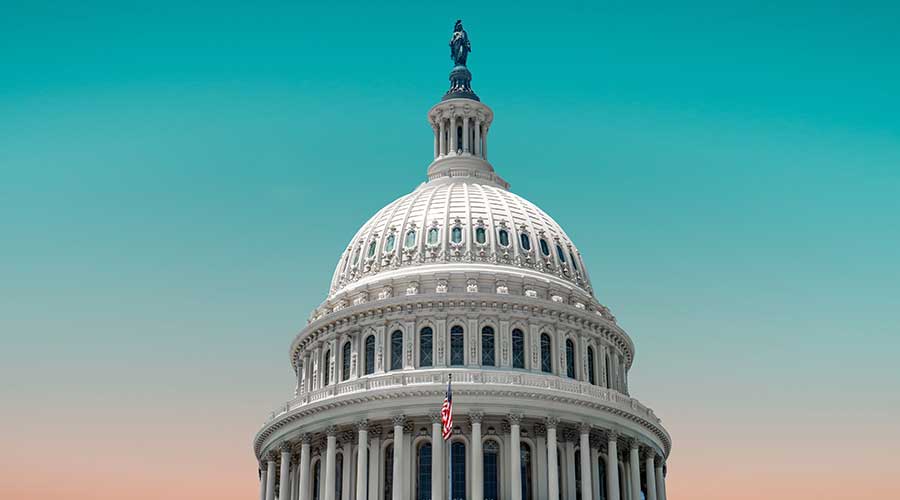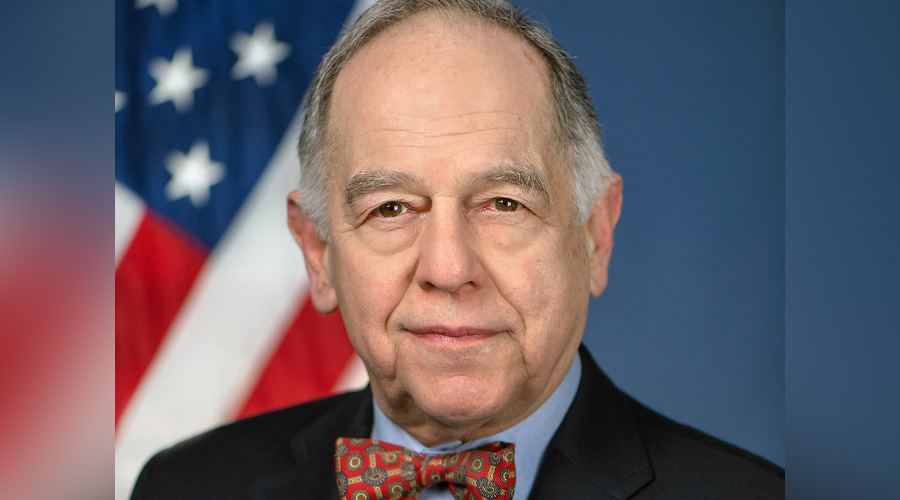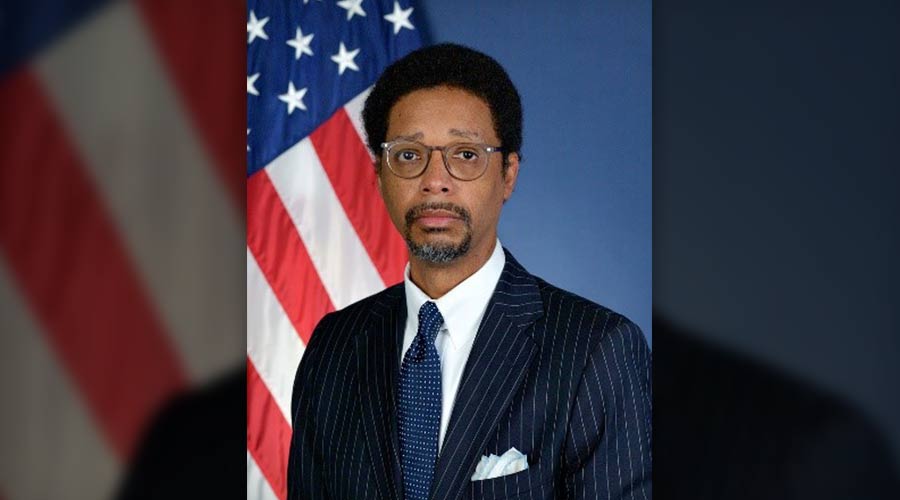Stay updated on news, articles and information for the rail industry
February 2014
Rail News: Short Lines & Regionals
Amtrak, short-line tax credit, train-crew size among key rail topics in D.C.
By Julie Sneider, Associate Editor
While funding issues and tank-car design standards will be prominent issues in Washington, D.C., during 2014, several other legislative concerns will be on industry observers' radar.
They include reauthorization of the Passenger Rail Investment and Improvement Act of 2008 (PRIIA), the law that authorizes Amtrak and which expired last year; extension of the short-line tax credit; the Section 130 Railway-Highway Crossings Program; and freight-train crew size.
PRIIA and Amtrak
Although it's still not clear whether PRIIA legislation will be part of part of a larger surface transportation package, the future of the nation's intercity passenger-rail system will be under the congressional microscope this year. In an interview posted on Politco.com in mid-January, House Subcommittee on Railroads, Pipelines and Hazardous Materials Chairman Jeff Denham (R-Calif.) said he preferred the Amtrak bill to stand as its own bill rather than be merged with the larger surface transportation measure, noting that the Highway Trust Fund will face some major obstacles to funding.
When lawmakers do consider PRIIA and Amtrak, the Association of American Railroads (AAR) has called on them to think long term regarding Amtrak infrastructure funding.
"It is not reasonable to expect Amtrak to be able to plan, build and maintain adequate infrastructure that provides optimal transportation mobility and connectivity when there is so much uncertainty regarding what its capital and operating funding will be from one year to the next," AAR President CEO Ed Hamberger said at a June 2013 T&I Committee hearing on PRIIA reauthorization.
Meanwhile, the American Public Transportation Association (APTA) wants to see reauthorization of PRIIA through a standalone bill or as a separate rail title to the surface transportation reauthorization legislation. The association also wants legislation to authorize no less than $50 billion over the next six years to develop a high-speed, intercity passenger-rail system that would connect with Amtrak and commuter-rail and transit connections, APTA officials stated in a legislative proposal and surface transportation reauthorization recommendations in December 2013.
One aspect of the passenger-rail debate that could be different on the Hill in 2014 compared with previous years: Amtrak might be slightly less of a punching bag now that Shuster is at the helm of the T&I Committee. As chair, Shuster succeeded U.S. John Mica (R-Fla.), who often refers to Amtrak as a "Soviet-style" rail system and has repeatedly called for privatizing parts of Amtrak service.
"I don't think Chairman Shuster will be Amtrak's best friend, but he comes from a state that relies on Amtrak and mass transit, and he has a long history of being involved in transportation and understands its value," says Joshua Schank, president and chief executive officer of the Eno Center for Transportation. ... "I don't think he wants to be the guy who is going to kill Amtrak. Compared with John Mica, it's a much improved situation, from Amtrak’s perspective."
That's not to say Amtrak will necessarily have smooth sailing when it comes to securing long-term federal funding.
"It tends to be really hard to convince people who don't have Amtrak service that it's something they want to spend money on," says Schank.
Meanwhile, Amtrak President and Chief Executive Officer Joseph Boardman recently said that the current surface transportation law's (MAP-21) Sept. 30th expiration provides an opportunity for Congress to create a new federal surface transportation investment program that focuses on national priorities, connectivity and economic growth.
"The Highway Trust Fund is dead," Boardman said in January speech to the National Press Club. "It's financially unviable and built on an outmoded vision for mobility in the United States."
Short-line tax credit
The Section 45G short-line tax credit that expired Dec. 31 likely will be extended before the first quarter ends, according to U.S. Sen. Jerry Moran (R-Kan.), who commented on the topic in remarks at the National Railroad Construction and Maintenance Association's (NRC) annual conference in early January.
Originally enacted in January 2005 and extended several times, the Section 45G provision enables regionals and short lines to claim a tax credit of 50 cents for every dollar spent on infrastructure improvements, up to a cap of $3,500 per mile of owned or leased track. Moran has long advocated for the tax credit, which has widespread support on Capitol Hill, as Moran noted in his remarks.
"We are working hard in D.C. to get the tax credit extended," says Chuck Baker, a partner with rail lobbying firm Chambers, Conlon & Hartwell L.L.C. who also serves as NRC president. "At this point, we are looking for it to be retroactive to Jan. 1, and that it would likely come as part of a tax extenders package. But it also could come as part of a tax reform bill."
Section 130 Grade Crossing Program
AAR and other industry groups are hoping to see a continuation of Section 130 Railway-Highway Crossings Program, which provides $220 million in federal dollars to states to make safety improvements that can help reduce fatalities and injuries at public grade crossings. MAP-21 preserved the budgetary set-aside for the program. At a Jan. 28 hearing of the Subcommittee on Highways and Transit, U.S. Rep. Nick Rahall (D-W.Va.) called for the program's continuation. Section 130 has helped prevent more than 10,500 fatalities and 51,000 nonfatal injuries, said Rahall, ranking member on the House T&I Committee.
"Without this dedicated funding, grade crossing needs would fare poorly in competition with other highway investment needs," he said in prepared remarks. "Since the dedicated set-aside was created under the Highway Safety Improvement program, states have obligated nearly 75 percent of their available funding. This is up from only 26 percent in fiscal-year 2006."
Freight-train crew size
Another safety issue expected to draw congressional and regulatory attention this year is freight-train crew size, a concern that stemmed from last year’s deadly crude-oil train derailment in Lac-Mégantic, Quebec. The Montreal, Maine & Atlantic Railway Ltd. train involved in that accident was manned by one person.
AAR's Hamberger said in an interview with Progressive Railroading late last year that he expects the crew-size issue to be "front and center" in D.C. in 2014. At a meeting of the Federal Railroad Administration's (FRA) Rail Safety Advisory Committee (RSAC), Federal Railroad Administrator Joseph Szabo "made it clear that he believes some regulation needs to be implemented on two-man crews," Hamberger said. Currently, there is no such requirement for minimum number of crew members on freight trains. Class I railroads require at least two-man crews, but that has been a matter of collective bargaining and not a matter of government regulation, Hamberger said.
In a January message posted on the FRA website, Szabo said he believes the RSAC will meet the agency's April 1 deadline to make recommendations related to train crew size, as well as the proper securement of trains and safe transportation of hazardous materials.
Meanwhile, U.S. Reps. Michael Michaud and Chellie Pingree, both Democrats from Maine, have introduced in Congress the "Safe Freight Act," a bill that would require a minimum of two-person crews. The United Transportation Union supports the bill; AAR has developed talking points in opposition to it.


 2025 MOW Spending Report: Passenger-rail programs
2025 MOW Spending Report: Passenger-rail programs
 Gardner steps down as Amtrak CEO
Gardner steps down as Amtrak CEO
 Guest comment: Oliver Wyman’s David Hunt
Guest comment: Oliver Wyman’s David Hunt
 Women of Influence in Rail eBook
Women of Influence in Rail eBook
 railPrime
railPrime








